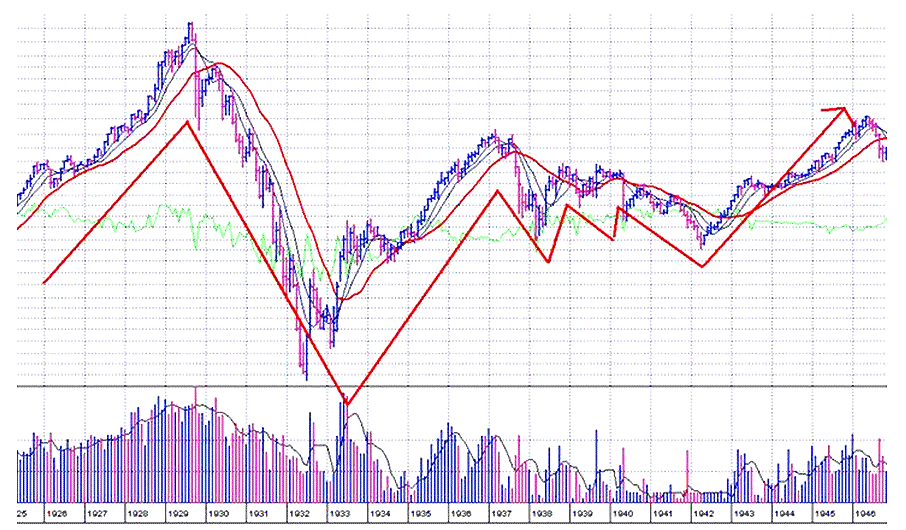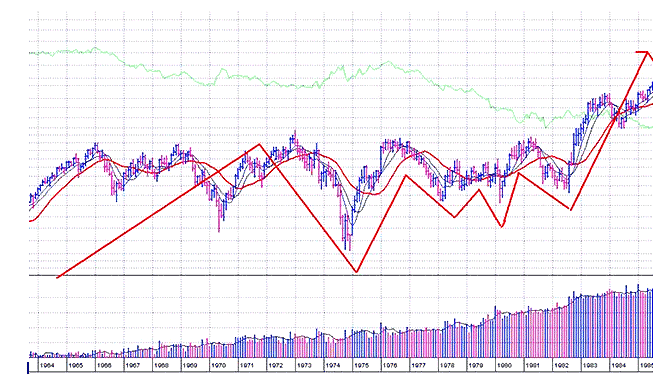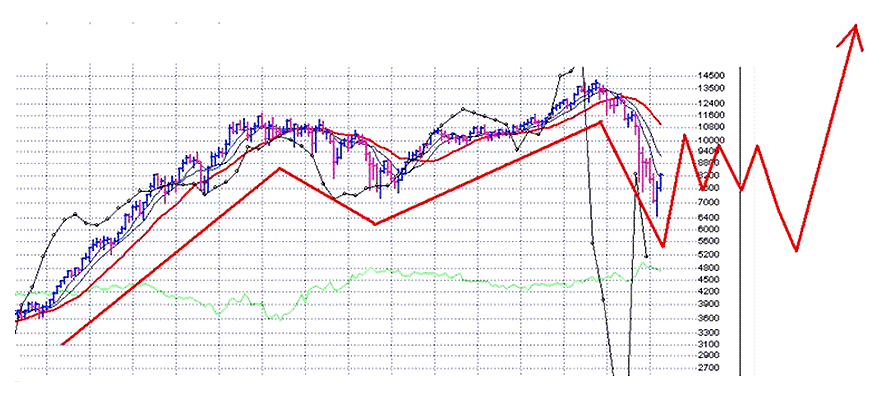Click here for a link to ORIGINAL article:
By Doug Kass | 4 May 2009
| This blog post originally appeared on RealMoney Silver on May 1 |
Not surprisingly, much of my writing deals with the near term— namely, the outlook over the next several months— as most investors and traders have that as their focus, but I do occasionally touch on the longer term, as I recently did in a discussion of "The Death of Buy and Hold." In actuality, though recent history might seem to counter the argument, the "real money" is typically not made in short-term "chops" rather it is made by thoughtful intermediate— to long-term investing. As to the short term, I am sticking with my view that March 9 represented a generational low but that the road to higher ground (to be traveled during the summer) might be bumpy, volatile and could test the conviction of the bulls. [[But note that last year he declared the September lows to be the "generational low"…: normxxx]]

Click Here, or on the image, to see a larger, undistorted image.
The fortuitous (accidental?) precision in my previous SPDRs forecast of two months ago (see above chart) as well as the continued seeming validity to the parallel with the late 1930s experience in the U.S. stock market (see below) suggest that I should test my luck and now focus on the longer term.
Dow in the 1930s and 1940s vs. Nasdaq Now: Very similar patterns

Click Here, or on the image, to see a larger, undistorted image.
In simplest terms, over the last century, 15— to 20-year bull markets are commonplace. Thereafter, a vicious two-year bear market has typically been followed by a retracement rally that works off the deep oversold that was a byproduct of the bull-market correction. Following the retracement rally, the market usually falls back down (e.g., 1937-1938 and 1974). This makes sense, as the markets, the economy, individuals and corporations require time to liquefy after an economic contraction and/or debt crisis.
My best guess (illustrated below) is that a similar pattern for the markets will develop after an explosive rally to 1,050 in the S&P 500 by late summer 2009— namely, first a sharp drop and then a flat period extending for four or five years. (One caveat: I fully recognize that the further one goes out with a market prediction the less likely will be the accuracy of that forecast.)
DJIA 20-Year (1926-1946)

Click Here, or on the image, to see a larger, undistorted image.
DJIA 20-Year (1964-1984)

Click Here, or on the image, to see a larger, undistorted image.
DJIA Current (Plus Expectations)

Click Here, or on the image, to see a larger, undistorted image.
Given the magnitude of the carnage in the consumer sector (in particular) and the borrowing needs of the U.S. government, a retrenchment period of that time span makes fundamental sense (and is logical), as it will take that long to fix the problems associated with what Warren Buffett termed an "economic Pearl Harbor"— namely, an outgrowth of the "credit on steroids" period that goosed the economic cycle of 2002-2007 [[which latter period would have been much more muted, except for "easy Al" goosing the credit markets and housing, and would have then led to a much more muted current pullback— possibly without even destroying the world's financial system.: normxxx]]. During this period, bond yields will be backing up, providing (among other things) prime competition to equities.
Taxes will also rise, providing a further headwind to economic growth and limitations on equities. It is my view that after the anticipated four— or five-year period of a relatively flat price pattern in the major market indices, perhaps sometime during 2013-2015, a new secular bull market will commence. By that time, the consumer's leverage levels will be reduced, the Asian consumer will be levering up, and we'll likely see a decline in commodity prices, taxes and bond yields— all of which occurred in the 1940s and 1980s.
Doug Kass is the author of The Edge, a blog on RealMoney Silver that features real-time shorting opportunities on the market.
No comments:
Post a Comment